Introduction: The Split-Second Decision
Picture yourself typing a question into Google right now—what makes you choose one result over another?
In that fleeting moment when search results appear on your screen, something fascinating happens. Your brain processes titles, descriptions, and visual cues in mere milliseconds, making snap judgments about which link deserves your click. This isn't random behavior; it's a complex psychological dance between emotion, logic, and learned patterns. Understanding the psychology of click-through rates reveals why some search results magnetize attention while others fade into digital obscurity, and more importantly, how you can harness these insights for effective CTR optimization.
The truth is, most users don't carefully read through every search result. Instead, they scan, react emotionally, and click based on subconscious triggers they aren't even aware of. Let's explore what really happens in those crucial seconds and how you can use SEO psychology to your advantage.
The Neuroscience Behind the Click
How Our Brains Process Search Results
When you look at a search results page, your brain doesn't read—it hunts. Studies show that users spend an average of just 0.5 to 2 seconds evaluating each result before making a decision. During this time, your visual cortex and emotional centers work together, scanning for specific patterns that signal value, trustworthiness, and relevance.
This phenomenon, known as "search results behavior," follows a predictable pattern. Most users exhibit what researchers call an "F-shaped reading pattern"—they scan the first few results horizontally, then move down the page in a more vertical sweep. This means your meta title and description have less than two seconds to capture attention.
The Role of Emotional Decision-Making
Here's where SEO psychology gets interesting: people like to think they make rational choices, but research proves otherwise. Approximately 95% of purchasing decisions happen in the subconscious mind, driven by emotion rather than logic. The same principle applies to clicks.
Emotional triggers SEO taps into fundamental human desires and fears:
- Curiosity: "The Surprising Truth About..."
- Fear of missing out: "Don't Make This Common Mistake"
- Desire for quick solutions: "5-Minute Fix for..."
- Social proof: "What 10,000 Users Discovered"
- Authority: "Expert Guide to..."
When your meta title strategy incorporates these emotional elements while remaining authentic and relevant, you're speaking directly to the user's subconscious decision-making process.
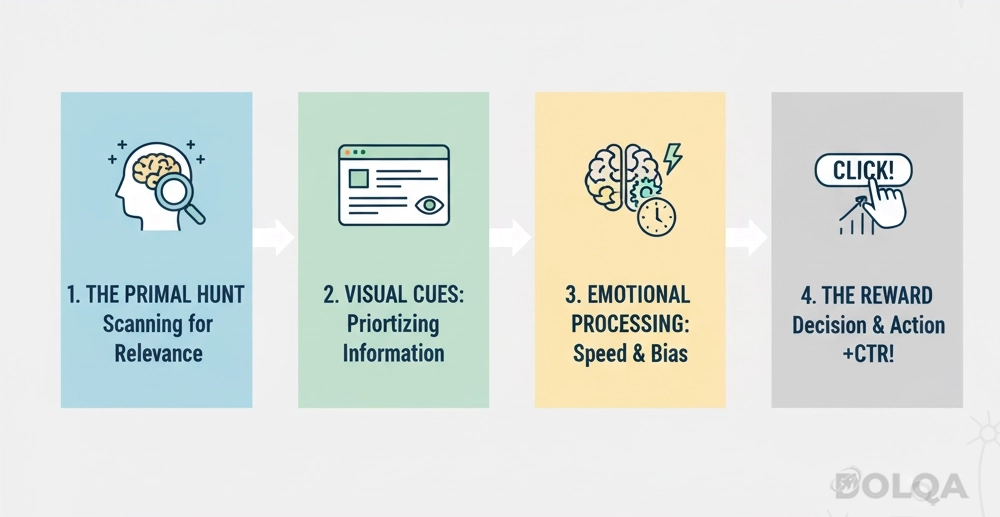
What Makes a Meta Title Irresistible
The Anatomy of High-Performing Titles
Creating an effective meta titles strategy isn't about tricks—it's about understanding what your audience truly wants and reflecting that understanding in your titles. High-converting titles typically share several characteristics:
1. Specificity Wins Trust
Compare these two titles:
- "Tips for Better Sleep" (Generic)
- "7 Sleep Habits That Changed My Insomnia in 14 Days" (Specific)
The second example gives concrete numbers and timeframes, which builds credibility and sets clear expectations.
2. Power Words Trigger Emotion
Certain words carry emotional weight that neutral language doesn't. Words like "proven," "essential," "ultimate," "secret," and "comprehensive" signal value and authority. However, use them honestly—misleading titles destroy trust and increase bounce rates.
3. Questions Create Engagement
Titles framed as questions can be powerful because they mirror the user's internal dialogue. "How Can I Improve My CTR?" feels more personal than "CTR Improvement Tips."
4. Numbers Provide Structure
Our brains love organized information. Lists and numbered titles ("5 Ways to..." or "The 3-Step Process for...") promise digestible, actionable content.
The Sweet Spot: Balancing Keywords and Readability
Effective CTR optimization requires harmony between search engine requirements and human psychology. Your title needs to include your target keyword for SEO purposes, but it must read naturally and appeal emotionally to humans.
A common mistake is keyword stuffing: "Best CTR Optimization CTR Tips for Better CTR Performance." This reads mechanically and repels users. Instead, try: "The CTR Optimization Blueprint: Double Your Click-Through Rate in 30 Days."
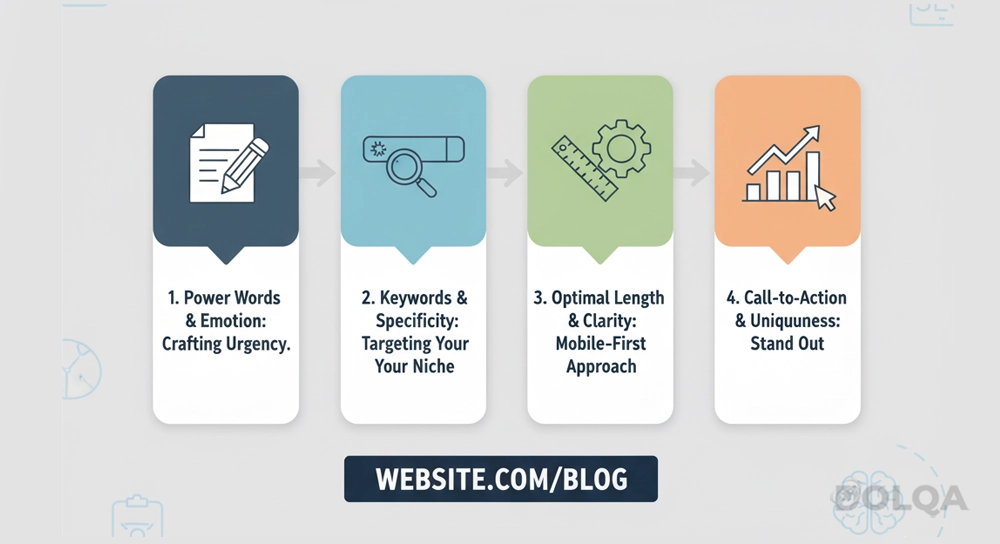
Understanding Search Results Behavior Patterns
What Users Actually See
Eye-tracking studies reveal fascinating insights about search results behavior. Users typically notice:
- The brand name or domain: Recognizable brands receive more clicks
- The meta title: Your primary opportunity to communicate value
- Rich snippets: Star ratings, dates, and structured data catch the eye
- URL structure: Clean, descriptive URLs build confidence
What users often ignore:
- Meta descriptions (unless the title catches their attention first)
- Lower search results (75% of users never scroll past the first page)
- Ads that are clearly labeled as such
The Psychology of Position
Position bias is real. The number one organic result receives approximately 28% of all clicks, while the tenth result receives less than 2%. However, understanding why helps you compete even from lower positions.
Users assume Google ranks results by quality and relevance, so position becomes a trust signal. To overcome position bias from spots 3-10, your title must work harder—offering unique value propositions that distinguish your content from higher-ranked results.
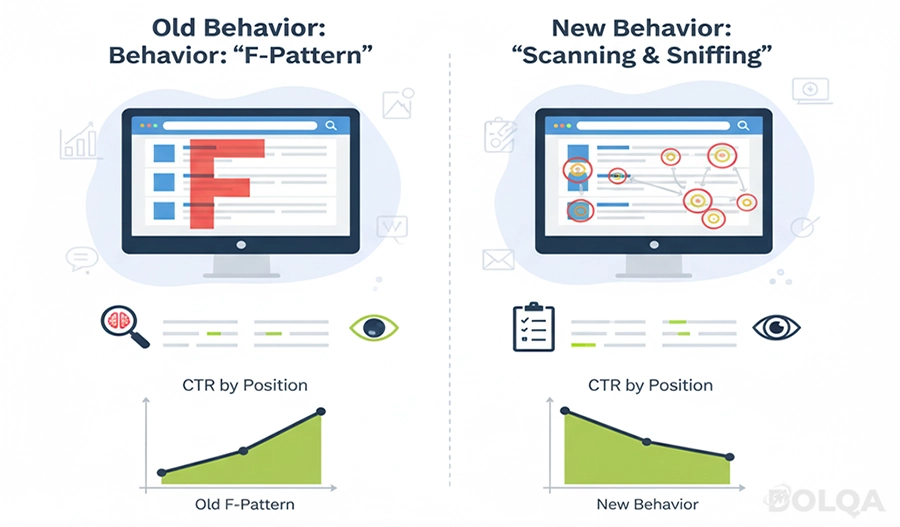
Emotional Triggers That Drive Clicks
The Fear Factor
Nothing motivates action quite like fear. Titles that highlight problems, consequences, or losses trigger our brain's threat-detection systems:
- "5 SEO Mistakes That Are Killing Your Traffic"
- "What You're Losing by Ignoring CTR Optimization"
- "The Hidden Cost of Poor Meta Titles"
These work because our brains are wired to prioritize avoiding losses over achieving gains—a principle called loss aversion.
The Promise of Transformation
Conversely, hope and aspiration are equally powerful emotional triggers SEO can harness. Users click on titles that promise improvement, success, or transformation:
- "Transform Your Search Rankings with These CTR Tactics"
- "From Zero to 1,000 Daily Visitors: A CTR Success Story"
- "Unlock Your Website's Hidden Potential"
Curiosity Gaps
Creating a "curiosity gap"—revealing just enough information to intrigue without satisfying—compels clicks. This technique works because our brains crave closure and completion:
- "The One CTR Factor Everyone Overlooks (It's Not What You Think)"
- "I Tested 50 Meta Titles. Here's What Actually Worked"
The key is delivering on your promise. If users click and feel deceived, they'll bounce immediately, which damages your rankings.
Practical CTR Optimization Strategies
Testing and Refining Your Approach
The most successful meta titles strategy involves continuous testing. What works for one audience might fail for another. Here's how to systematically improve:
1. Start with Baseline Metrics
Use Google Search Console to identify pages with high impressions but low click-through rates. These represent opportunities—you're ranking well but failing to convert views into clicks.
2. A/B Test Title Variations
Create multiple title versions incorporating different emotional triggers, power words, and structures. Track which versions generate higher CTRs over several weeks.
3. Analyze Competitor Titles
Study the titles ranking above you. What patterns do they follow? What emotional appeals do they use? Don't copy—learn and differentiate.
4. Monitor User Behavior
High CTR but high bounce rate signals misalignment between your title's promise and content delivery. Both metrics must improve together for sustainable success.
Writing Meta Descriptions That Support Your Titles
While meta descriptions carry less weight than titles, they still influence search results behavior. Think of them as your title's supporting actor:
- Expand on the title's promise with additional benefits
- Include a clear call-to-action
- Use natural language that incorporates secondary keywords
- Stay within 155-160 characters to avoid truncation
Example:Title: "Why Users Really Click: The Psychology Behind CTR"Description: "Discover the psychological triggers that drive clicks in search results. Learn proven CTR optimization strategies and emotional tactics that boost engagement."
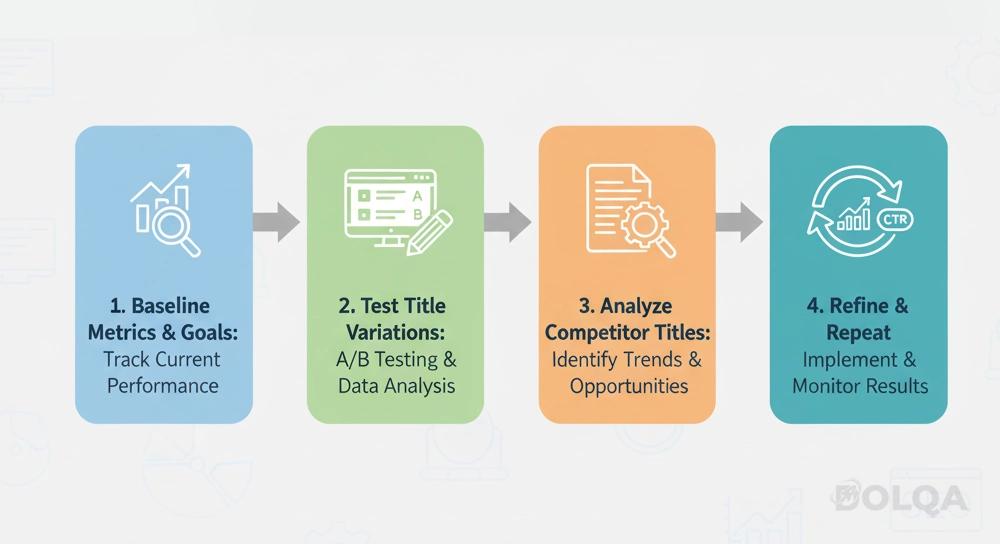
The Ethics of Psychological SEO
Balancing Persuasion and Honesty
Understanding SEO psychology comes with responsibility. While emotional triggers and persuasive language increase clicks, they must accurately represent your content. Clickbait might boost initial CTR, but it destroys trust, increases bounce rates, and ultimately harms your rankings.
The sustainable approach combines psychological insights with genuine value:
- Use emotional language that reflects actual content benefits
- Make specific promises you can fulfill
- Prioritize user satisfaction over short-term click gains
- Build long-term authority through consistency between titles and content
Conclusion: The Science Meets Art
Mastering the psychology of click-through rates isn't about manipulation—it's about understanding how people think, what they need, and how to communicate value in a crowded digital landscape. Effective CTR optimization combines data-driven testing with psychological insights, creating meta titles that resonate emotionally while delivering genuine value.
Start by examining your current titles through this psychological lens. Are you triggering curiosity? Creating emotional connections? Offering specific, believable promises? The answers to these questions will guide your optimization strategy.
Remember, every search results page is a conversation between what users need and what you offer. When you understand the psychology driving that conversation, you don't just increase clicks—you connect with the right audience who'll value what you've created.
What psychological trigger will you test in your next meta title?


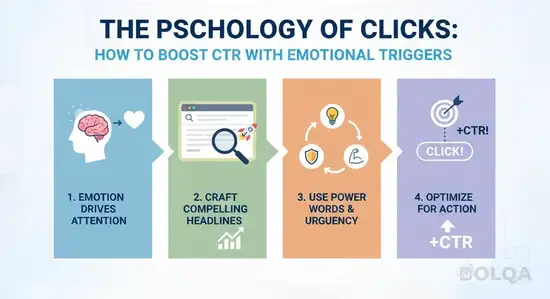
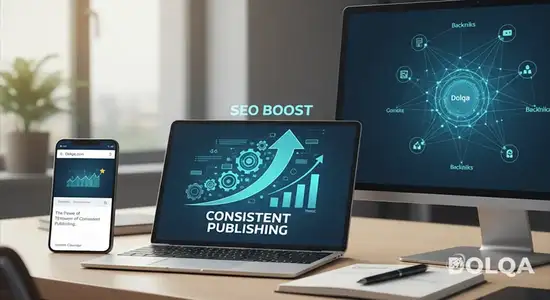

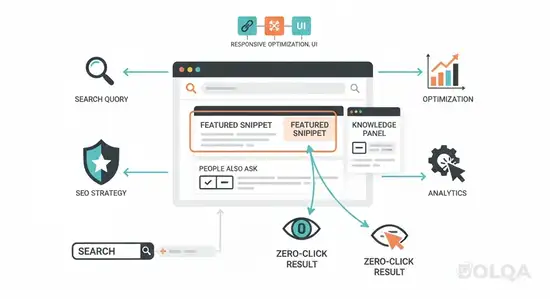
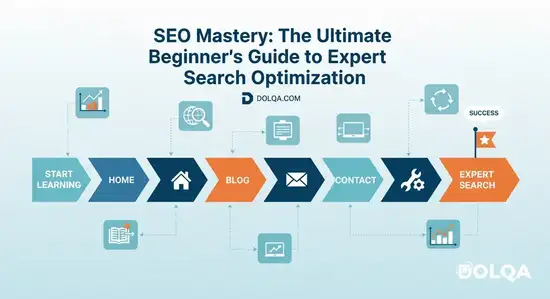
Comments (0)
Leave a Comment
No comments yet. Be the first to comment!